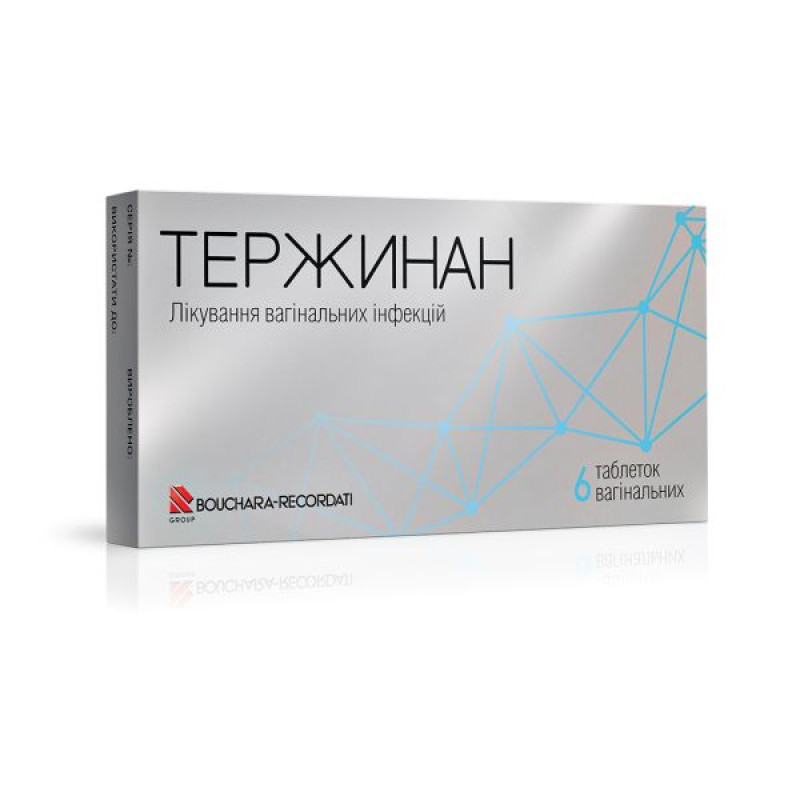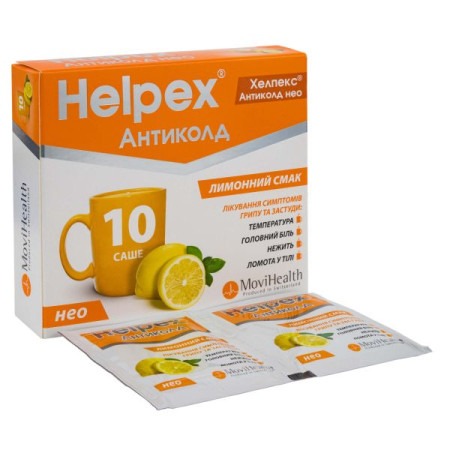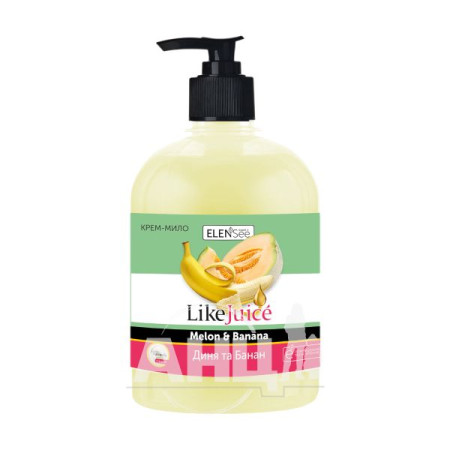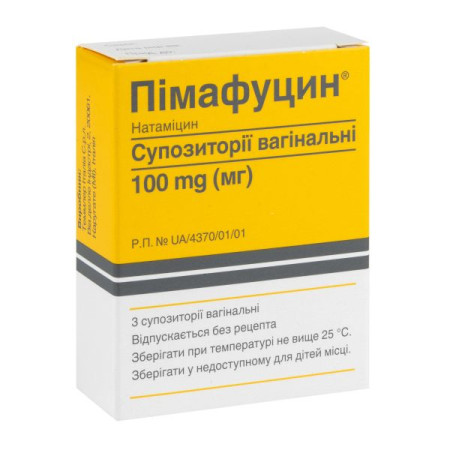Terzhinan vaginal tablets strip No. 6

Instructions for Terzhinan vaginal tablets strip No. 6
Composition
active ingredients: ternidazole, neomycin sulfate, nystatin, prednisolone sodium metasulfobenzoate;
1 vaginal tablet contains ternidazole 200 mg; neomycin sulfate 100 mg (65,000 IU); nystatin 100,000 IU; prednisolone sodium metasulfobenzoate 4.7 mg, which corresponds to 3.0 mg of prednisolone;
excipients: wheat starch, colloidal anhydrous silicon dioxide, sodium starch glycolate (type A), magnesium stearate, lactose monohydrate.
Dosage form
Vaginal tablets.
Main physicochemical properties: oblong, cream-colored tablets with the letter "T".
Pharmacotherapeutic group
Antimicrobial and antiseptic agents used in gynecology. Imidazole derivatives and corticosteroids.
ATX code G01B F.
Pharmacological properties
Pharmacodynamics
Pharmacological properties are due to the properties of the components of the drug. Terzhinan with its polyvalent formula is suitable for complete local treatment of vaginitis of various origins: infectious, parasitic or mixed. It combines in its composition:
ternidazole, which has a trichomonacidal effect and is active against anaerobic bacteria, including Gardnerella; neomycin sulfate, which is a broad-spectrum antibiotic active against vaginal pyogenic organisms;
The following microorganisms are sensitive to neomycin sulfate:
Corynebacterium, Listeria monocytogenes, Staphylococcus Meti-S, Acinetobacter baumannii, Brahamella catarrhalis, Campylobacter, Citrobacter freundii, Citrobacter koseri, Enterobacter aerogenes, Enterobacter cloacae, Escherichia coli, Haemophilus influenzae, Klebsiella, Morganella morganii, Proteus mirabilis, Proteus vulgaris, Providencia rettgeri, Salmonella, Serratia, Shigella, Yersinia; nystatin, which is an antifungal antibiotic of the polyene group, active against fungi of the genus Candida; prednisolone, which is a glucocorticoid that has a pronounced anti-inflammatory effect.
The composition of excipients ensures the integrity of the vaginal mucosa and a constant pH.
Pharmacokinetics
Didn't study.
Indication
Treatment of vaginitis caused by microorganisms sensitive to the drug, such as:
bacterial vaginitis caused by banal pyogenic microflora; nonspecific vaginitis accompanied by desquamative discharge; vaginal trichomoniasis; vaginitis caused by fungi of the genus Candida; vaginitis caused by mixed infection (trichomonads, anaerobic infection and yeast-like fungi).
Contraindication
Hypersensitivity to the components of the drug. This drug is not recommended for use in combination with certain doses of acetylsalicylic acid (see "Interaction with other medicinal products and other types of interactions").
Interaction with other medicinal products and other types of interactions
Interactions related to prednisolone
Undesirable combinations:
with acetylsalicylic acid: increased risk of bleeding when used simultaneously with anti-inflammatory doses of acetylsalicylic acid (≥ 1 g per dose or ≥ 3 g per day).
Combinations that require careful use:
with anticonvulsants, enzyme inducers: decreased plasma concentration and efficacy of corticosteroids by increasing their metabolism in the liver. The consequences of this are particularly severe (or important) for patients with Addison's disease treated with hydrocortisone and in the case of organ transplantation. Monitoring of clinical and laboratory tests is necessary, as well as correction of the dose of corticosteroids during therapy and after discontinuation of treatment with enzyme inducers; with isoniazid: decreased plasma concentration of isoniazid by increasing its metabolism in the liver and decreased hepatic metabolism of glucocorticosteroids; with rifampicin: decreased plasma concentration and efficacy of corticosteroids by increasing their metabolism in the liver after interaction with rifampicin. The consequences of this are particularly severe (or important) for patients with Addison's disease treated with hydrocortisone and in the case of organ transplantation. Clinical and laboratory monitoring is necessary, as well as corticosteroid dose adjustment during and after rifampicin therapy; with other hypokalemic drugs: increased risk of hypokalemia. Serum potassium should be monitored and corrected if necessary; with digitalis drugs: hypokalemia exacerbates the toxic effects of digitalis drugs. Before treatment with the drug, assess for hypokalemia, determine serum potassium, and perform electrocardiography; with drugs that induce torsades de pointes: increased risk of ventricular arrhythmias, including torsades de pointes. Before treatment with the drug, assess for hypokalemia, determine serum potassium, and perform electrocardiography.
with cyclosporine: increased effects of prednisolone, including Cushingoid states, decreased carbohydrate tolerance (decreased clearance of prednisolone); with acetylsalicylic acid: increased risk of bleeding with antipyretic or analgesic doses ≥ 500 mg per dose or < 3 g per day; with nonsteroidal anti-inflammatory drugs: increased risk of peptic ulcer and gastrointestinal bleeding; with fluoroquinolones: possible increased risk of tendinitis or even tendon rupture (rarely), particularly in patients treated with corticosteroids for a long time.
Application features
Simultaneous treatment of the sexual partner is required to prevent the risk of re-infection.
Despite topical application, slight absorption of various components is possible (see "Adverse reactions").
Hypersensitivity to topical application may indicate that the use of these or related antibiotics is undesirable.
Precautions during use.
The duration of treatment should be limited to reduce the risk of the emergence of resistant microorganisms or superinfection caused by these microorganisms.
Ability to influence reaction speed when driving vehicles or other mechanisms
No special warnings.
Use during pregnancy or breastfeeding
Use is possible as prescribed and under the supervision of a doctor in accordance with the indications for use of the drug.
Method of administration and doses
The dose and duration of treatment are determined by the doctor individually.
Prescribed for adults. Applied vaginally, 1 vaginal tablet 1–2 times a day. The average duration of treatment is 10 consecutive days. In the case of confirmed mycosis – 20 days.
Patients are advised to thoroughly wash their hands and then soak the tablets in water for 2–3 seconds before inserting them to the maximum comfortable depth into the vagina (this is easiest to do when the patient is lying on their back with their legs bent). They should then lie down for approximately 15 minutes after administration.
Practical advice.
Treatment should be accompanied by personal hygiene (wear cotton underwear, avoid douching, and use pads instead of tampons during treatment) and, as much as possible, avoid adverse factors.
The course of treatment should not be interrupted during menstruation.
Children
The drug is not used in children.
Overdose
Data is missing.
Adverse reactions
Immune system disorders: hypersensitivity.
Skin and subcutaneous tissue disorders: allergic dermatitis, rash, itching, urticaria.
Reproductive system and breast disorders: application site reactions such as tingling or irritation, erosions, vaginal swelling, vaginal burning sensation, vulvovaginal erythema, vulvovaginal pain, vulvovaginal itching.
Expiration date
3 years.
Storage conditions
Keep out of reach of children.
Store in the original packaging at a temperature not exceeding 25 ºС.
Packaging
6 tablets in a strip, 1 strip in a cardboard box with labeling in Ukrainian and English.
Vacation category
According to the recipe.
Producer
Sofartex.
Location of the manufacturer and its business address
21, rue Pressoir, 28500, Vernouillet, France.
There are no reviews for this product.
There are no reviews for this product, be the first to leave your review.
No questions about this product, be the first and ask your question.










